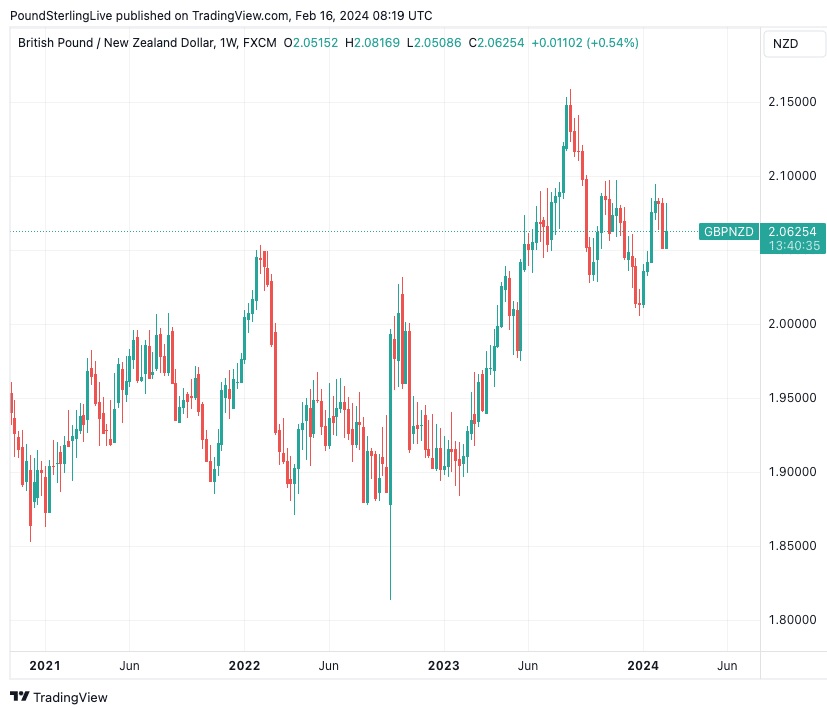 The New Zealand Dollar has encountered challenges recently, influenced by various factors, according to an analysis by Commerzbank. Despite facing pressure due to broader U.S. Dollar strength and domestic issues, the analysis suggests a more optimistic outlook for the currency in the coming months.
The New Zealand Dollar has encountered challenges recently, influenced by various factors, according to an analysis by Commerzbank. Despite facing pressure due to broader U.S. Dollar strength and domestic issues, the analysis suggests a more optimistic outlook for the currency in the coming months.
“Economic Dynamics and Impact on NZD-USD”
Commerzbank’s FX Analyst, Michael Pfister, points out that the New Zealand and Australian Dollars have been trading below last year’s interim high, primarily influenced by the strength of the U.S. Dollar and domestic factors. The Chinese economy’s recent weakness has had a cascading effect on both the Australian and New Zealand economies, given their close interdependence, leading to a decline in AUD-USD and NZD-USD.
Furthermore, Pfister notes the impact of past interest rate hikes, indicating a clear effect on the Australian and New Zealand economies, with rising unemployment rates in both countries. Economic growth in New Zealand has notably slowed, turning negative in the third quarter, possibly attributed to the Reserve Bank of New Zealand’s (RBNZ) assertive interest rate hikes.
“Reasons for Optimism Amid Challenges”
Despite the challenges, Pfister outlines reasons for optimism. The labor market in both countries remains robust, showing resilience despite signs of a slowdown. Central banks anticipate only a slight weakening of the overall labor market. In New Zealand, the effects of most interest rate hikes have likely reached the real economy, and their dampening impact is expected to gradually diminish.

Commerzbank’s China experts anticipate a slow stabilization of Chinese economic growth, which is expected to limit negative impacts on the real economy in Australia and New Zealand. Consequently, New Zealand’s economic growth is predicted to stabilize slowly, albeit at a subdued level.
“Inflation Dynamics and RBNZ’s Approach”
Commerzbank notes that inflation in New Zealand has proven more persistent than in other regions. Despite weaker growth, the Reserve Bank of New Zealand (RBNZ) is likely to act cautiously, maintaining a hawkish stance. While other major central banks discuss potential interest rate cuts, the RBNZ is expected to delay such measures, supporting the New Zealand Dollar.
“Moderate Appreciation Anticipated”
Pfister concludes that despite the challenges faced by the real economy, a moderate appreciation of the Australian Dollar (AUD) and New Zealand Dollar (NZD) is expected. This projection is attributed to the surprisingly hawkish stance of the central banks, which, despite falling inflation, are likely to delay rate cuts compared to other G10 central banks. This resilience is anticipated to contribute to the NZD’s positive performance in the foreseeable future.




